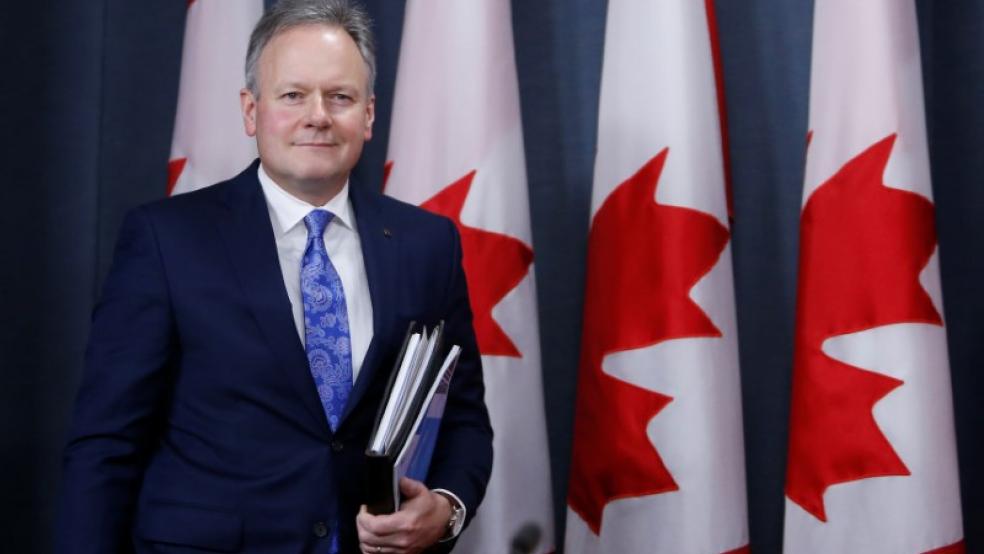OTTAWA (Reuters) - If the Bank of Canada caught markets by surprise last week in laying the groundwork for interest rate hikes, it may have been because traders missed - or ignored - signals the central bank was already sending.
Hawkish comments from the bank's two top policymakers last week sent the Canadian dollar up 1.7 percent over two days, its best two-day run in a year, as markets recalibrated the risk that rate increases could be coming sooner than had been expected. The Canadian dollar has since declined slightly though it is still stronger than it was before a speech by a senior Bank of Canada official last Monday. Some analysts said the bank began moving away from its dovish stance with policy statements in April and May that forecast the closing of the output gap would happen sooner and described recent economic data as "encouraging." Governor Stephen Poloz in April characterized the bank's stance as "decidedly neutral." That represented a significant shift in tone that markets did not fully grasp, which may have frustrated the central bank, said Frances Donald, senior economist at Manulife Asset Management."The Bank of Canada may be trying to correct the long impression of them as ongoingly dovish as opposed to shifting to a new tone," Donald said of policymakers' recent remarks.The apparent gap in understanding between the central bank and markets illustrates the balancing act policymakers face in preparing the market for eventual tightening without boxing themselves into a corner as the economy faces a number of risks that could postpone a hike, particularly uncertain U.S. trade policy.In a speech last Monday, Senior Deputy Governor Carolyn Wilkins said the bank will assess whether the rate cuts it put in place in 2015 during the oil price shock are still needed. That was followed the next day by Poloz saying those cuts have largely done their work.A spokeswoman for the Bank of Canada said the bank could not comment further.The bank was likely aware that many economists were not forecasting rate hikes until 2018 and felt "we have to put them back on track, there's something they don't understand," said Sebastien Lavoie, chief economist at Larentian Bank Securities.Markets are now fully pricing in a rate hike by the end of 2017, with a 33.5 percent chance of a hike at the bank's next meeting in July. While the U.S. Federal Reserve used forward guidance to ease the way for markets ahead of its first rate hike in nearly a decade in 2015, markets should be prepared for little in the way of explicit guidance from Poloz, who dropped the practice in 2014."The Bank of Canada has wisely preserved its flexibility while putting the market on notice," said Adam Button, currency analyst at ForexLive.Although that will likely mean more volatility in the Canadian dollar in the short run, it is preferable to having markets get too far ahead of the central bank, analysts said."Seeing the market go where you're going but getting there before you do, that's not the ideal thing for a central banker," said Fred Demers, chief Canada macro strategist at TD Securities. "You don't want to feel like you're tied."Analysts also chalked up the change in tone to Poloz's willingness to surprise markets if need be, as the bank did with its first unexpected rate cut in 2015."With Poloz, he's a bit more old fashioned," said Demers. "He doesn't mind shaking the markets." (Reporting by Leah Schnurr; Editing by Dan Grebler)Bank of Canada sowed the seeds of hawkish stance ahead of shift

Chris Wattie



